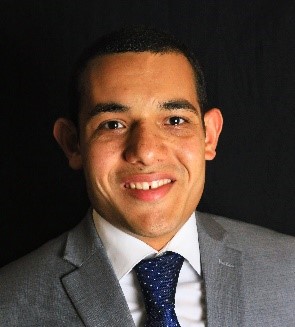Session 7
Wednesday, March 16th
8:30am – 9:30am US Central Time
Presentation 1: 08:30 AM
What's happening in Deep Transient Testing?
Speaker: Adriaan Gisolf, Schlumberger
The growing need to optimize cost and the desire to operate in a more environmentally friendly way has led to the recent introduction of a new wireline formation testing (WFT) technique known as deep transient testing (DTT). DTT combines high-resolution measurements, higher flow rates, and longer test durations to perform transient tests in higher permeability, thicker formation, and at greater depth of investigation than with previous formation testers—without flaring and at a low carbon footprint. The platform combines advanced metrology with extensive automation to generate unique, real-time reservoir insights.
This first part of this presentation will outline the planning phase of DTT operations, which requires elaborate wellbore dynamics simulations and sensitivity analysis, as well as pressure transient and clean up simulations. In the second part of the presentation several recent examples will be discussed, with focus on the latest measurements and interpretation methodologies.
 Adriaan Gisolf
Adriaan Gisolf
Adriaan Gisolf is a reservoir domain advisor with Schlumberger based in Bucharest. Previously, he worked in Indonesia, Nigeria, Colombia, Angola, Norway, North America, and Scotland. He holds a master's degree in mechanical engineering from Delft University of Technology. He coauthored 30 publications on wireline formation testing and coinvented more than 30 allowed US patents.
Presentation 2: 09:00 AM
Areal connectivity assessment of a heavily compartmentalized reservoir through downhole fluid analysis and data integration
Speaker: Tarek Mohamed, The University of Texas at Austin
Connectivity assessment is vital to the development of deepwater reservoirs where inaccurate characterization often results in production underperformance. Connectivity realizations are needed for production forecast, completion and production plans, and water flooding plans, to name a few. Seismic surveys are not always sufficient to evaluate lateral connectivity as detected faults might be transmissive or partially transmissive. Additionally, the presence of sub-seismic sealing faults is a constant possibility. Vertical connectivity represents another uncertainty where, in many cases, pressure measurements and conventional well-logs are unable to predict the presence of baffles and barriers along oil columns. In moderately complex reservoirs, downhole fluid analysis (DFA) workflow proved to be sufficient in addressing reservoir connectivity. However, heavily faulted reservoirs necessitate a comprehensive approach to address their excessive complexity. This study presents a novel workflow to evaluate the connectivity of heavily compartmentalized reservoirs. We implemented our workflow to characterize the connectivity of an exceedingly complex deepwater reservoir. As a result of our study, we were able to classify detectable faults as sealing, transmissive, or partially transmissive faults. The presence of sub-seismic faults was also detected.
 Tarek Mohamed
Tarek Mohamed
Tarek Mohamed is a graduate student and petrophysics research assistant at the University of Texas at Austin, pursuing a PhD degree in petroleum engineering under the supervision of Dr. Carlos Torres-Verdin. His research focuses on developing new interpretation methods and applications of formation testers and downhole fluid analysis (DFA) measurements. He holds a BS degree from Suez University, Egypt, and an MS degree from the University of Oklahoma in petroleum engineering, and a Graduate Certificate in data science and analytics from the University of Oklahoma. His wide educational background includes petrophysics, formation evaluation, reservoir characterization, reservoir numerical modeling and simulation, well test analysis, reservoir geomechanics, and data science and machine learning. He also has a variety of professional, teaching assistance, and research experiences
REGISTRATION FEE:FREE to current members and Non-Members are $25.00
How to Register:
1) Log In -> Click on the "Register Myself" tab -> Add this event to your cart -> Check out (complete payment) -> Find a receipt in your email inbox for your records. You have not completed the registration until you go to #2.
2) Locate an email from webinar_registration in you inbox -> Follow the instructions in the email to complete your registration in GoToWebinar to generate a unique link and add the event to your calendar -> You must have a link to access this class, without the link you will not be able to join. -> Being proactive will allow you easy access.